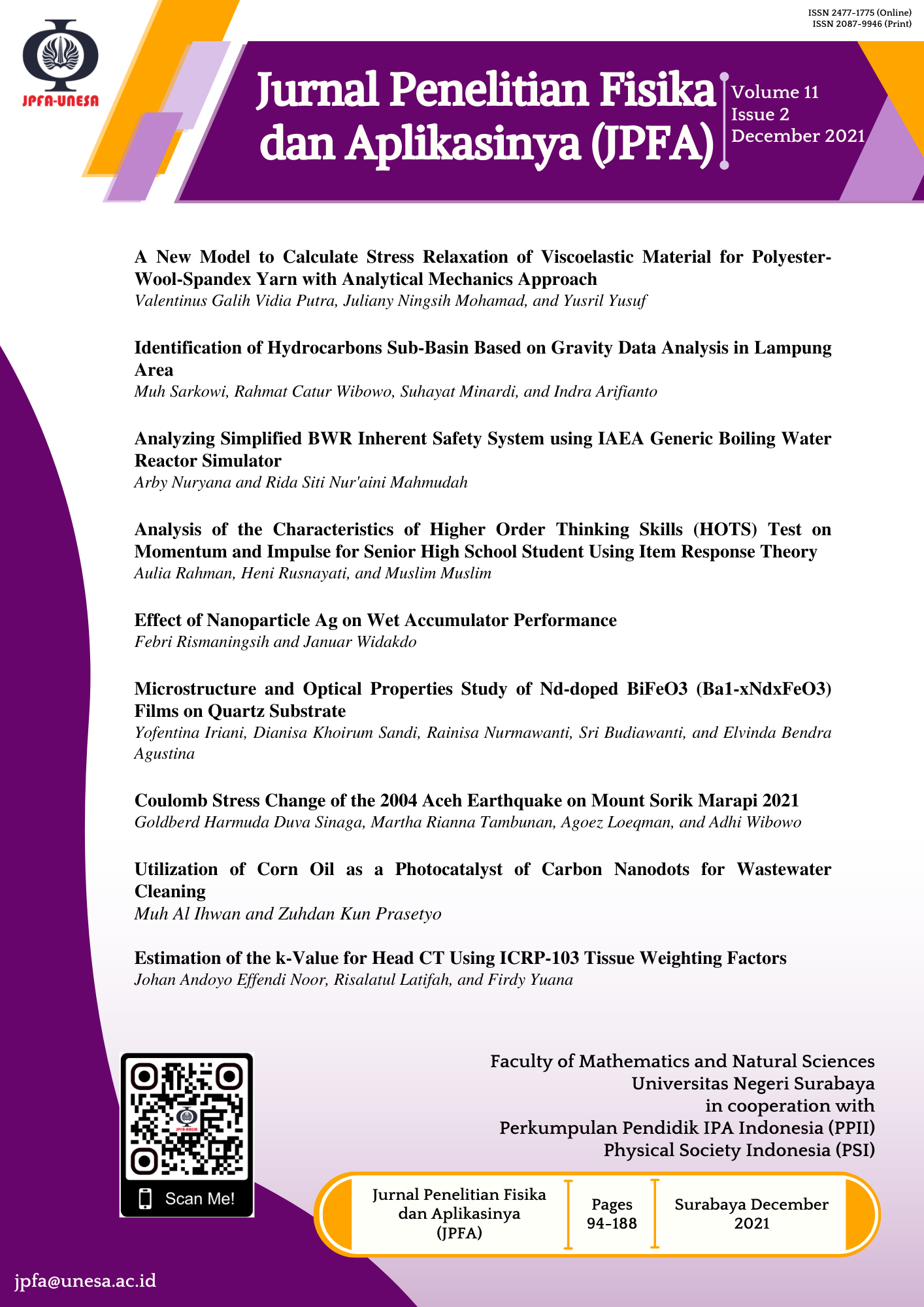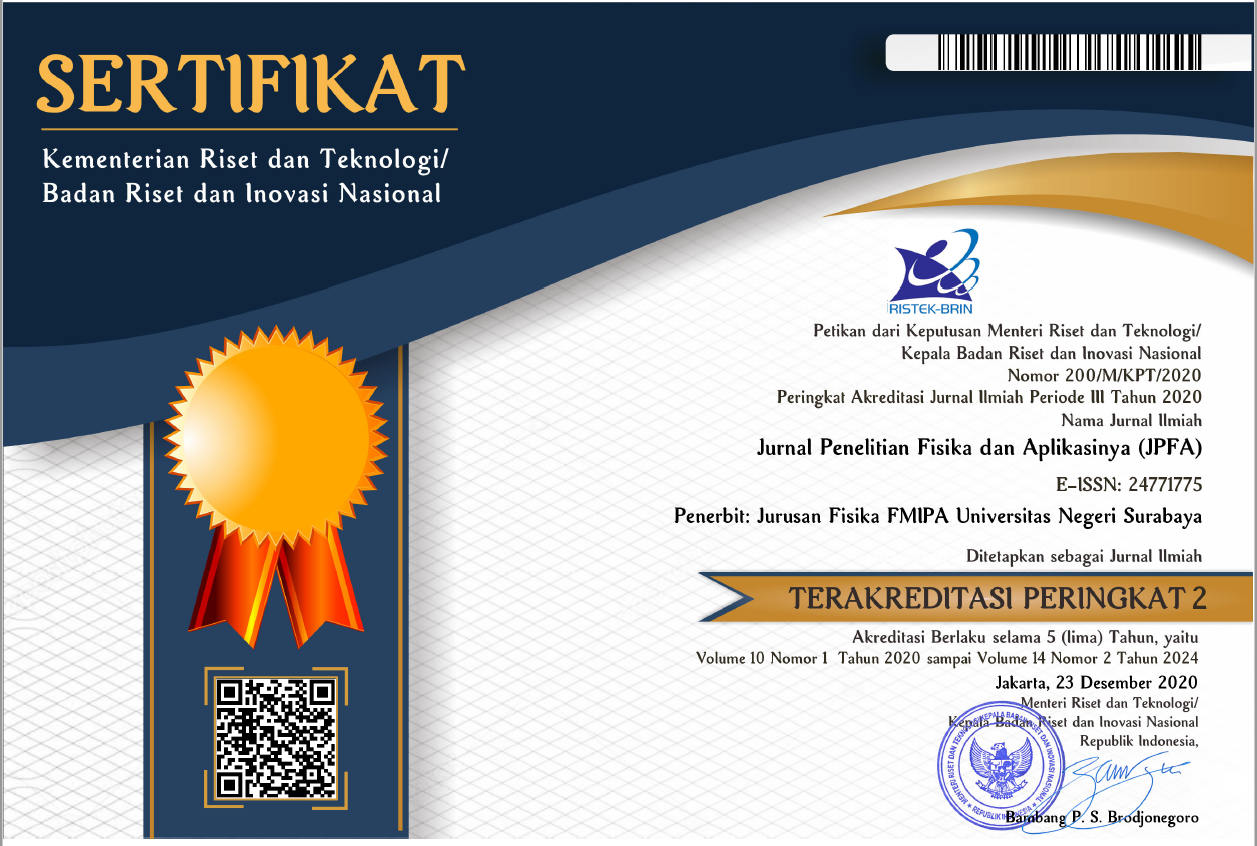Utilization of Corn Oil as a Photocatalyst of Carbon Nanodots for Wastewater Cleaning
DOI:
https://doi.org/10.26740/jpfa.v11n2.p171-178Keywords:
Corn oil, Carbon nanodoots, PhotocatalystAbstract
Water is a basic need of society. Unfortunately, the availability of clean water is very limited due to the large amount of waste in the waters in various regions in Indonesia. Thus, innovation is needed to purify wastewater. This research utilizes corn oil to reduce the pollution of dye waste, which is a problem for the environment. Corn oil is easy to find so it is suitable to be used to purify water waste. The photocatalyst technique using carbon nanodots of sun-assisted corn oil is an economical and easy-to-obtain method. Carbon nanodots from corn oil are made using the Hydrothermal method at a temperature of 2500oC heated for 3 hours. Carbon nanodots from corn oil are used as a photocatalyst in artificial methylene blue waste solutions. The photocatalyst test process is carried out by varying the amount of carbon dots. The result was observed until the artificial wastewater from methylene blue turned clear by varying a lot of carbon from 2 ml, 4 ml, 6 ml, 8 ml, and 10 ml. When the carbon nanodot content is 8 ml, the fastest time needed to clear methylene blue wastewater is 55 minutes. The fewer or more solutions given, the more time to clear up. These results indicate that carbon nanodots from corn oil can be used for photocatalyst purification of methylene blue wastewater.
References
Ferronato N and Torretta V. Waste Mismanagement in Developing Countries: A Review of Global Issues. International Journal of Environmental Research and Public Health. 2019; 16(6): 1060. DOI: https://doi.org/10.3390/ijerph16061060.
Ayilara MS, Oluwaseyi SO, Babalola OO and Odeyemi O. Waste Management through Composting: Challenges and Potentials. Sustainability. 2020; 12: 4456. DOI: https://doi.org/10.3390/su12114456.
Mannu A, Garroni S, Porras JI and Mele A. Available Technologies and Materials for Waste Cooking Oil Recycling. Processes. 2020; 8(3): 366. DOI: https://doi.org/10.3390/pr8030366.
Kang X, Liu S, Dai Z, He Y, Song X, and Tan Z. Titanium Dioxide: From Engineering to Applications. Catalysts. 2019; 9(2): 191. DOI: https://doi.org/10.3390/catal9020191.
Santofani A and Rosana D. Pengembangan tes kreativitas pada pembelajaran fisika dengan pendekatan inkuiri pada materi teori kinetik gas. Jurnal Inovasi Pendidikan IPA. 2016; 2(2): 134-144. DOI: https://doi.org/10.21831/jipi.v2i2.6373.
Chu KW, Lee SL, Chang CJ and Liu L. Recent Progress of Carbon Dot Precursors and Photocatalysis Applications. Polymers. 2019; 11(4): 689. DOI: https://doi.org/10.3390/polym11040689.
Downloads
Published
How to Cite
Issue
Section
License
Copyright (c) 2021 Jurnal Penelitian Fisika dan Aplikasinya (JPFA)

This work is licensed under a Creative Commons Attribution-NonCommercial 4.0 International License.
Author(s) who wish to publish with this journal should agree to the following terms:
- Author(s) retain copyright and grant the journal right of first publication with the work simultaneously licensed under a Creative Commons Attribution-Non Commercial 4.0 License (CC BY-NC) that allows others to share the work with an acknowledgement of the work's authorship and initial publication in this journal for noncommercial purposes.
- Author(s) are able to enter into separate, additional contractual arrangements for the non-exclusive distribution of the journal's published version of the work (e.g., post it to an institutional repository or publish it in a book), with an acknowledgement of its initial publication in this journal.
The publisher publish and distribute the Article with the copyright notice to the JPFA with the article license CC-BY-NC 4.0.
 Abstract views: 296
,
Abstract views: 296
, PDF Downloads: 621
PDF Downloads: 621









